By Victor Caneva
A refreshing gale blew in the morning as I waited for the 7:50 ferry to Muggia at Molo Bersaglieri. After living in Florida, where I describe the weather from May until October as “living inside a giant’s mouth,” I savor any semblance of cool in the summer.
I was excited that morning because I was going to try something I had always wanted to do: walk to another country. The plan was to catch the ferry to Muggia, our more Venetian-feeling neighbor to the south, and then walk along the coast until I crossed into Slovenia.

My parents’ apartment features a striking view of Muggia and the hills that make up the northernmost cape of the Istrian Peninsula. I’ve spent plenty of time gazing over at this point, trying to make out what mysteries lie west of Muggia before the land disappears into the sea. Having a hopeless desire to always see what’s around the next bend, I’ve wanted to round this headland since I first laid eyes on it three years ago.

At €4,25 for a one-way ticket and €7,90 for a return, the ferry to Muggia really is a steal for such a gorgeous ride. This day was a special treat as the wind had cleared the air and the Alps were visible, soaring over the Carso hills which usually dominate the view.

After 30 minutes, the ferry docked and suddenly I arrived in a fishing village with its own personality. Muggia, at least the Borgo Lauro (Laurel) section that makes up the main part of Muggia today, was built up after the Genoese destroyed the previous hilltop community of Muggia Vecchia in the mid 14th century (more on that later). The Venetians, who ruled the town for much of its history, left an indelible mark on the architecture and cuisine, forming a cultural legacy that is quite distinct from Trieste. Before I set off on my hike, I ventured into the center of town for a cappuccino and to take some photos of the evocative streets surrounding the main piazza.
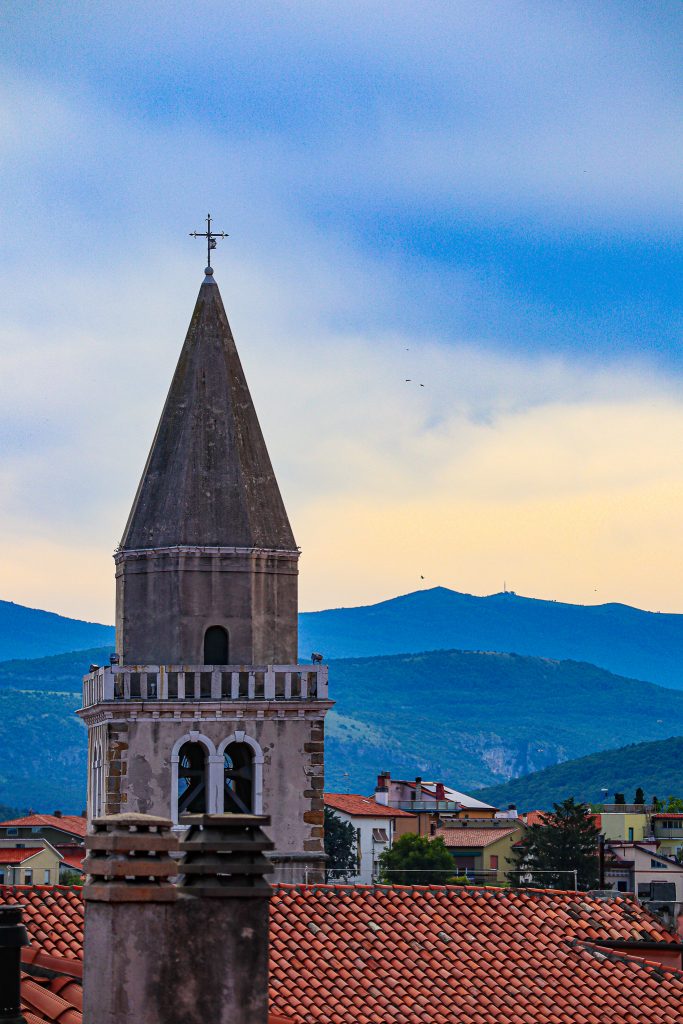
Wanting to cover some ground before the heat of the day, I set out westward on the lungomare (or seafront promenade) passing sunbathers, and, an always welcome surprise in Europe, some public restrooms that were both free and clean. Soon I arrived at Porto San Rocco, a newer upscale community and resort adjacent to a well appointed marina.
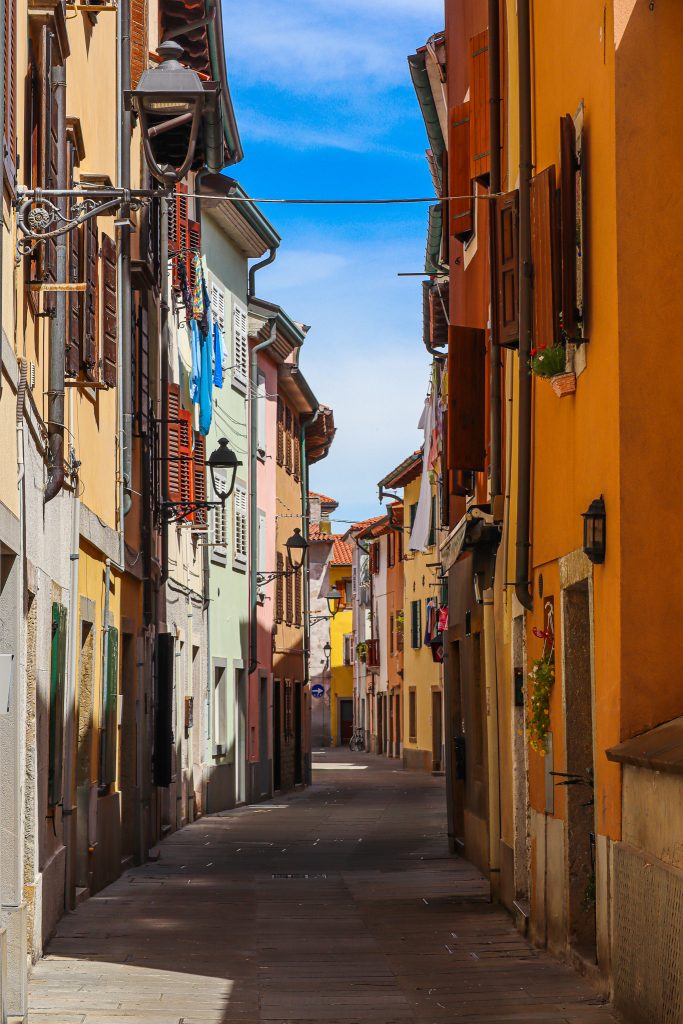
Once past Porto San Rocco, the sidewalk ended and I was forced to walk on the side of SP14. The views of the Gulf of Trieste, choppy and perturbed by wind from the east, were top, but it was hard to relax as cars filled with beachgoers headed to their favorite spots further down the coast. As I made my way down the cape, sea walls interspersed with bathing areas bordered the right side of the road and green hills shot sharply up on my left. Some of the houses on the hillside had what looked like personal funiculars beside them, which I assume are there to help bring crops, likely grapes, down the slopes.

At last, I arrived at the end of the point where a stone obelisk stood. Expecting a monument to something-or-other, I was surprised to see it surrounded by sunbathers. The column marks the entrance to the historic Bagno di Punta Sottile (now Stabilimento Balneare Gabriele), a bathing area dating back to 1911 that formerly catered to exclusive clientele. One of the preeminent returning guests was Prince Lodovico Salvatore, who enjoyed swimming here au naturale flanked by trusted, and hopefully discreet, staff.
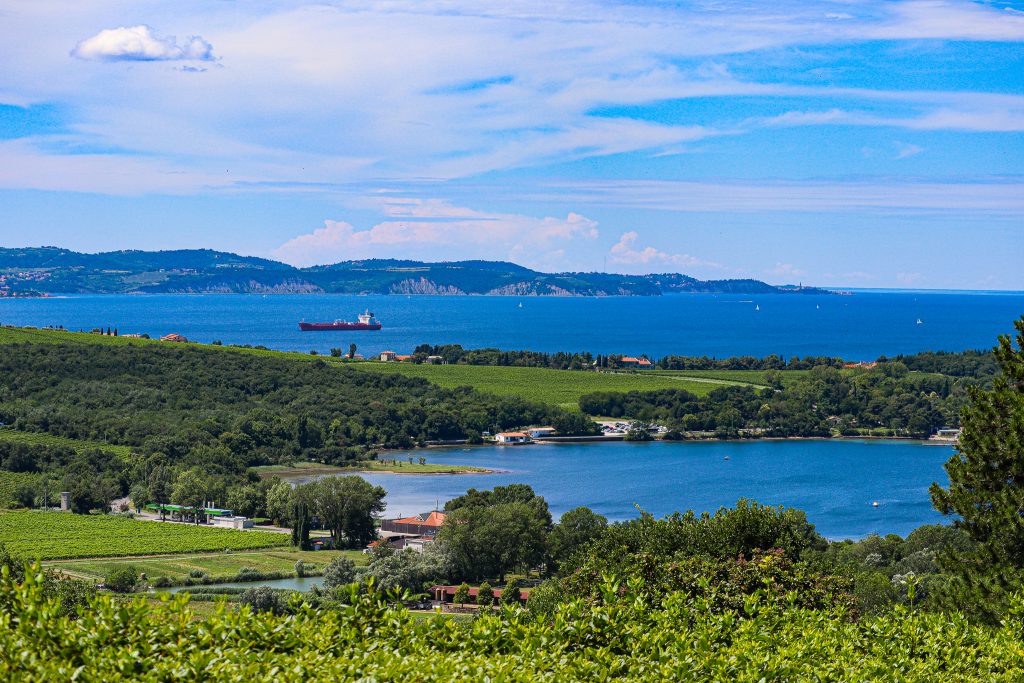
When I rounded the point, the bora winds abruptly stopped and the sea stretching out to the south was as calm as the waters between Trieste and Muggia were turbulent. I caught my first glimpse of Piran, Slovenia, a classic example of an Istrian coastal city with it’s Venetian bell tower dominating the small peninsula packed tightly with stone buildings.

For the first time, I spied a Slovenian headland between my position and Koper, adorned with countless grape vines waiting their turn to be made into some form of yummy fermented specialty. An Italian military installation with a small, but crowded beach directly in front of it lay straight ahead. I passed by the walls of the base, which had been there for some time and then saw a sign: “250 Meters to Slovenia.” After passing a small campground, I crossed into Slovenia! Lifelong goal achieved!

Crossing from Lazzaretto on the Italian side to Lazaret on the Slovenian side, the first thing I saw was the obligatory duty-free shop complete with (or collocated with) a butcher shop. The next establishment was a gas station. One of our dear Triestina friends had explained to us that many Triestini routinely go into Slovenia to buy meat and to fill up their macchine with less expensive petrol. If this border crossing was any indication, she was definitely right!
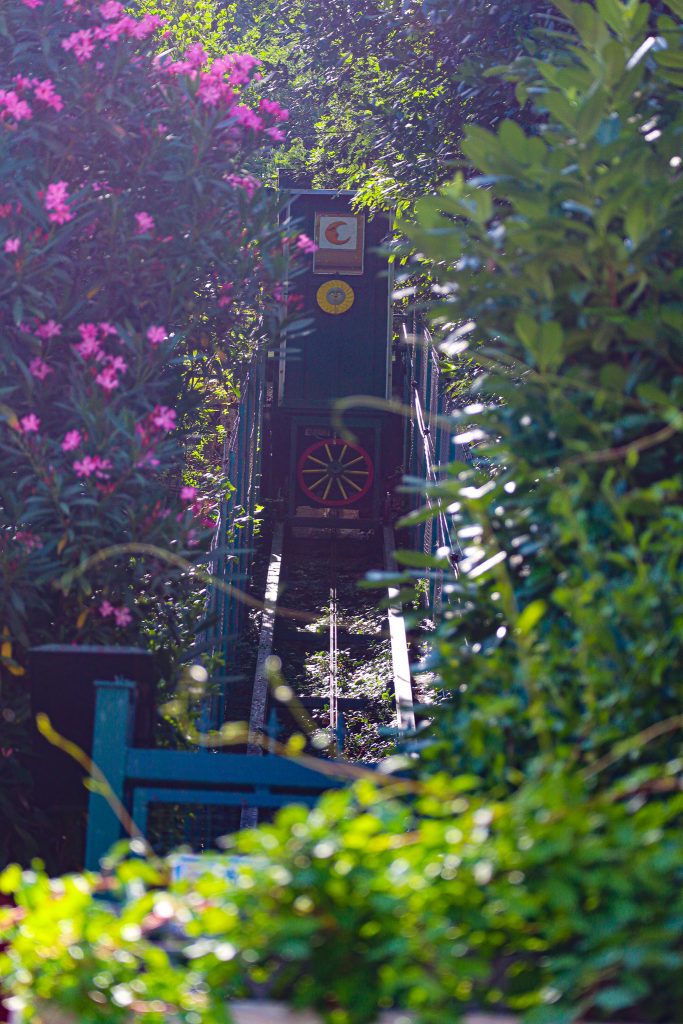
Having to see just a little more, I continued on under shady trees in an area that began to feel more rural. I stopped at the entrance to a sunbathing area on a miniscule marshy peninsula where a creek rolling down the hill emptied into the Adriatic.
I ventured onto the point to get a better view of the coast and made out another public bathing area further down the headland, but soon realized that the particular sunbathing area I was in was probably not the best place to be walking around with a telephoto lens. Not wanting to creep anyone out, I headed back north to Italy.
Once back in Il Bel Paese, I decided to head to Muggia by climbing up the hills and cutting back overland. The walk was strenuous, but peaceful, bypassing farmland and vineyards and finally emerging on a hilltop. Hungry and parched after a significant morning’s exertion, I stumbled upon the perfectly named Osteria Belvedere. Seated by an open window, breathtaking views of the sea were enhanced by the exceptional clarity of the air, allowing me to enjoy the snowy peaks of the Julian Alps. After refuelling with exquisite squid-ink spaghetti with calamari and chilled local prosecco, I reached the summit of the hill and, completely accidentally, discovered Muggia Vecchia.
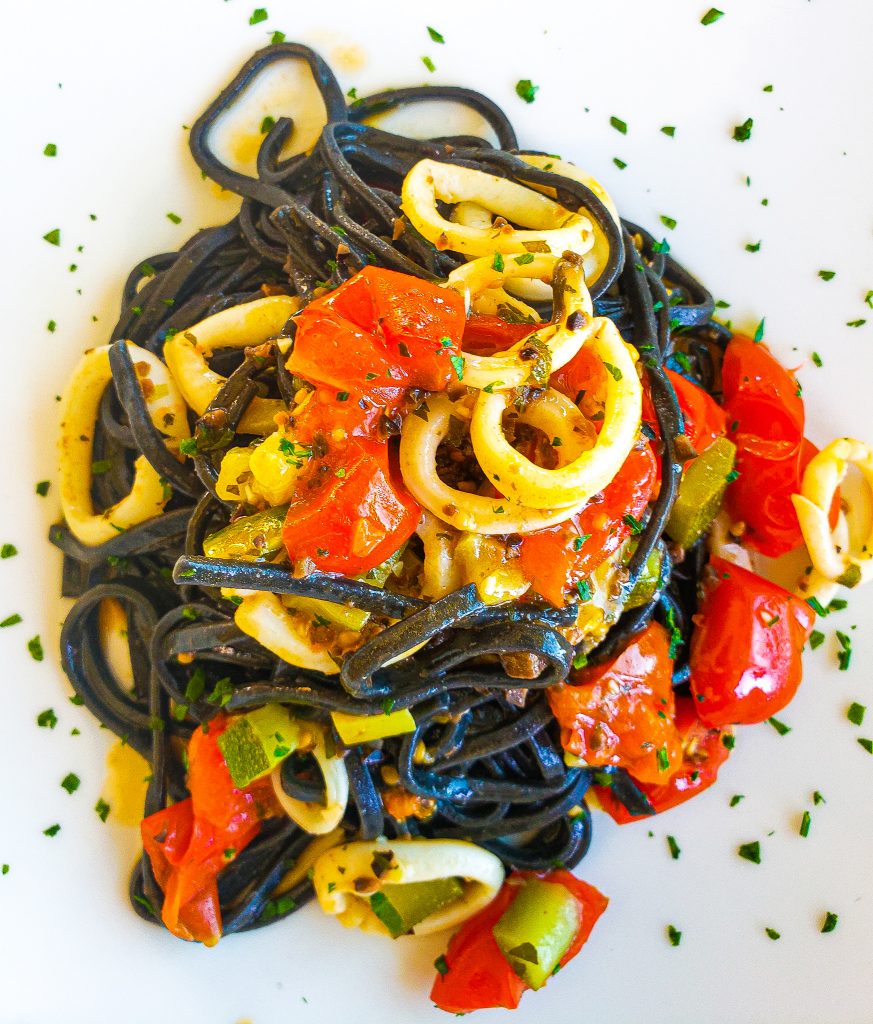
Muggia Vecchia has been inhabited since about the 8th century B.C., when residents quarried sandstone on the 170 meter (560 foot) hill. The area was subsequently settled by the Romans and later became a thriving medieval town. Featuring a walkway through majestic oaks leading to the ruins of several homes from the early middle ages, Muggia Vecchia Archeological Park is a tranquil setting to both learn and spend some restorative time outdoors.
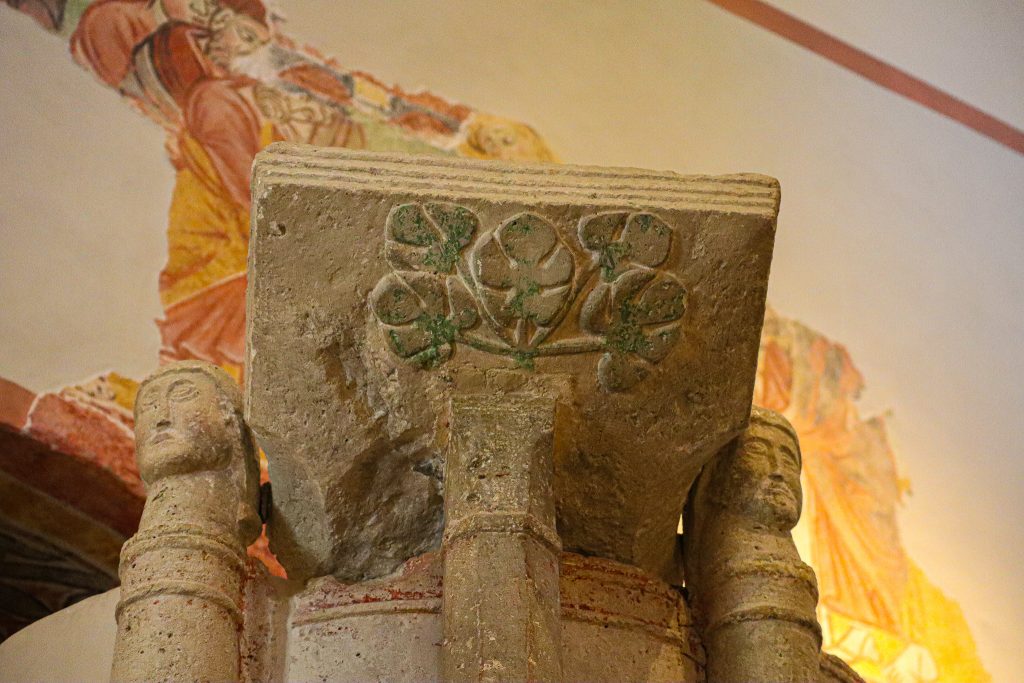
At the center of the park is the only remaining medieval structure in Muggia Vecchia, the Basilica of Santa Maria Assunta, which boasts unique stone furnishings from the 8th or 9th centuries and recently restored, vibrant frescoes from the 14th and 15th centuries. I’ve seen quite a few old churches, but the basilica preserves a salient medieval atmosphere that transported me back in time. Being a nerd, I really treasure experiences like this.
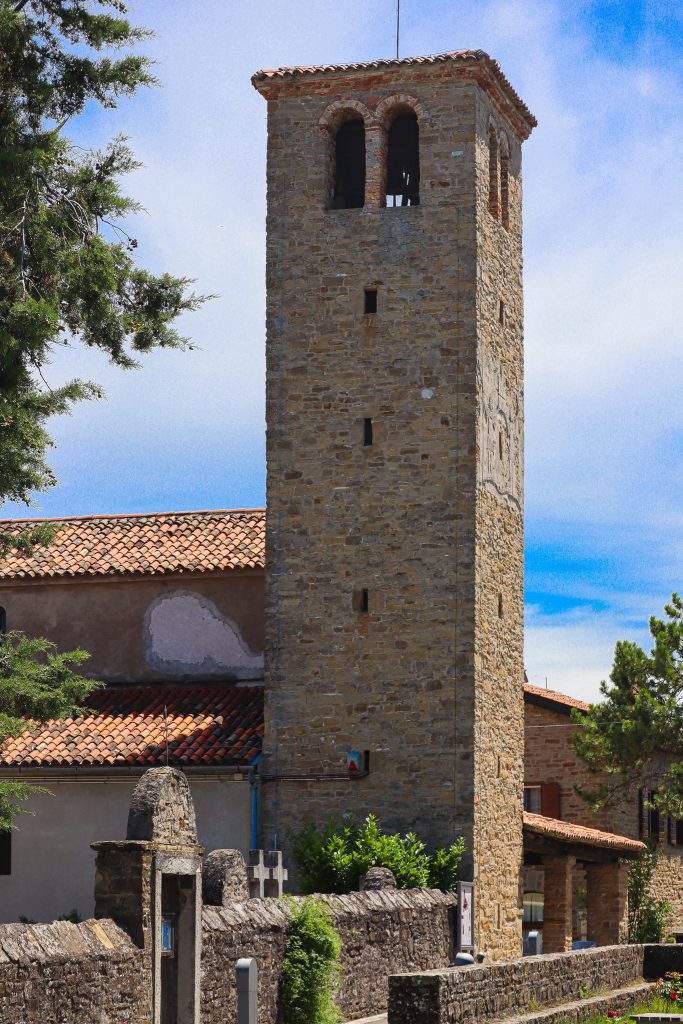
Leaving the basilica, I walked to the door of St. Odorico where sentries used to watch over the valuable salt mines below, and then began my descent to Muggia. I had walked to Slovenia. I had “seen around the next bend.” I had also gotten sunburned. Tired, full, and content, I boarded the ferry and floated back to Trieste and home.






























Grazie, on Article on Muggia and Slovenia.
I’ve made me relive beautiful memories of the first half of my life. Thank you!
My Mother was confirmed in the Basilica of Santa Maria Assunta (Muggia Vecchia ) in 1932 at the age of 7